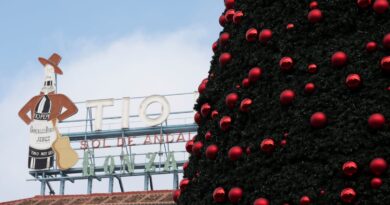U.S. Navy Big Horn runs aground off Oman as replenishment vessel supports USS Lincoln strike group
The only U.S. Navy oil replenishment ship serving the USS Abraham Lincoln Carrier Strike Group, deployed in the Middle East in support of Israel amid its ongoing war with Hamas and soaring tension between other Iran-backed groups, ran aground Monday off the coast of Oman. U.S. officials told CBS News national security correspondent Charlie D’Agata the damage to the USNS Big Horn was significant enough to cause the partial flooding of the vessel, and it was being escorted by tugboats into port for a full assessment.
The Big Horn is a type of vessel referred to as an “oiler,” which ferries fuel and other vital supplies to ships and aircraft deployed in a strike group.
There were no reported injuries, no other vessels were directly affected and there were no signs of fuel leaks from the Big Horn, but it was the only Navy oiler immediately available in the region to support the Lincoln and its fleet of battleships, escort vessels and aircraft.
Handout/U.S. Navy
Navy officials would not confirm the authenticity of video posted online this week allegedly showing the ship taking on water. The incident was under investigation.
The Big Horn ran aground after a recent resupply mission, with photos released by the U.S. military showing sailors aboard the Lincoln receiving supplies from the oiler on Sept. 5, while another from Sept. 11 showed the Big Horn alongside the Lincoln.
The Lincoln and its associated Navy vessels have been patrolling the Arabian Sea in support of Israel, and to protect U.S. assets in the region. It has played a role in the joint U.S.-British operation to deter Yemen’s Houthi rebels from targeting commercial and military vessels in the region, including in the vital shipping lanes of the Red Sea. The Houthis, who are backed by Iran like Hamas, call their attacks on shipping a means of supporting the Palestinians amid Israel’s war with Hamas.
Numerous airstrikes carried out by U.S. and British vessels and aircraft in the region against Houthi targets in Yemen have failed to stem the missile attacks on ships.
Though the Lincoln itself is powered by a nuclear reactor, but its strike group has vessels powered by fossil fuel that need to be resupplied at sea. The aircraft aboard the Lincoln also need jet fuel. The Big Horn and other ships like it also provide other supplies.
Handout/U.S. Navy
The U.S. official called the damage to the refueler an inconvenience but said the fleet would continue to be able to operate without it. The strike group’s destroyers can refuel in port and they can transport aviation fuel to the carrier to supply the on-board fighter jets and surveillance aircraft.
Oilers like the Big Horn typically have around 80 civilians and five military personnel on board.
The incident comes amid well documented concern over the availability of resources for the U.S. Navy as it faces expanding global threats, not only with the rising tumult in the Middle East, but as China seeks to assert itself militarily in the disputed waters of the South China Sea and around Taiwan.
Labor shortages in shipyards that have led to backlogs in ship production and maintenance, combined with shifting defense priorities, last-minute design changes and cost overruns have all combined to put the U.S. Navy behind China in the number of ships at its disposal.
Navy shipbuilding is currently in “a terrible state” — the worst in a quarter century, says
Eric Labs, a longtime naval analyst at the Congressional Budget Office, told The Associated Press in August that U.S. Navy shipbuilding was in “a terrible state,” largely due to the labor shortages onshore, adding that he did not “see a fast, easy way to get out of this problem.”






